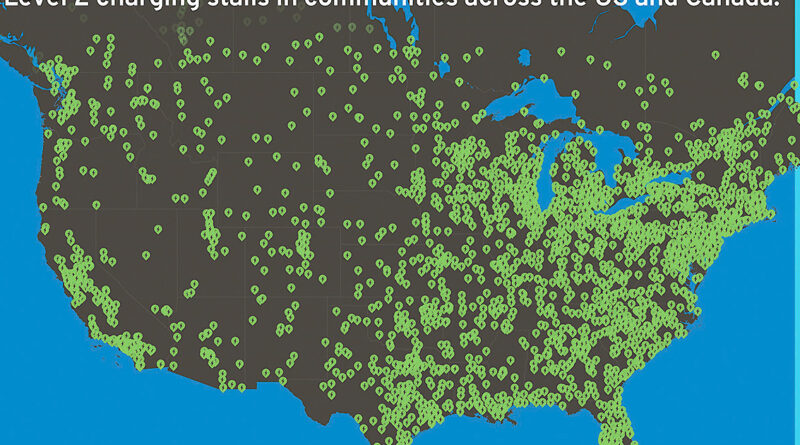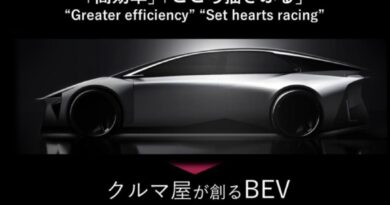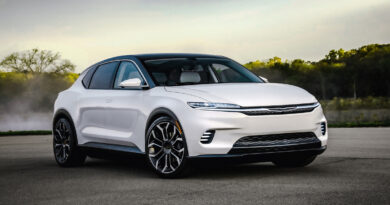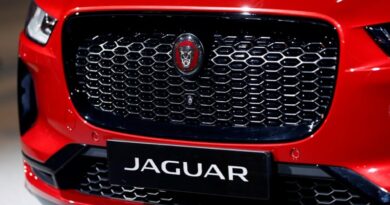GM partners with dealers to build an EV charging network in communities
OWOSSO, Mich. — The public charging infrastructure required to alleviate the consumer range anxiety that’s hindering adoption of electric vehicles doesn’t yet exist in many communities.
That’s why General Motors dealer Tony Young was among the first in the nation to install public chargers as part of a program the automaker launched late last year.
Young, who owns Young Chevrolet-Cadillac, worked with Memorial Healthcare, the largest employer in the region, to install 10 chargers — five stations that can charge two vehicles each — in the parking lot of its Owosso campus, about 90 miles northwest of Detroit.
In the Dealer Community Charging Program, GM provides Level 2 chargers to participating dealers, who work with businesses, municipalities and other organizations to install them locally for public access. The idea is to build a charging network that increases access in smaller communities that don’t yet have much infrastructure. Installing Level 2 chargers rather than DC fast chargers can be easier and more cost-efficient, allowing them to be deployed quickly, GM said.
The vehicles that plug in at Memorial Healthcare often are non-GM brands, Young said. That is expected to change when GM begins to sell several new EVs this year, including electric versions of the Chevy Silverado, Blazer and Equinox. Still, he said, consumers may be less likely to consider buying an EV if they think charging the battery will be an issue.
Through this program, “we’ll be ahead of the game instead of behind the eight ball,” Young said. “And the only way I think I’ll be able to sell a lot of electric vehicles is if my community is ready for it.”
GM is targeting 40,000 such chargers in communities across the U.S. and Canada by the end of 2026. The automaker has roughly 4,000 dealerships in the U.S. and 450 in Canada selling Buick, Cadillac, Chevrolet and GMC vehicles. Dealers representing all four brands are eligible to participate, and each store generally can place up to 10 chargers, said Jared Jenson, the program’s manager.
GM said it has enrolled about 1,100 dealerships in the program, and about 30 chargers have been installed so far at locations in Michigan, Wisconsin, Ohio and Illinois. Delaware is next, the automaker said, and more than 100 chargers are awaiting installation in total.
The fact that the investment is shared three ways — among GM, the dealership and the organization hosting the chargers — could make it an easier decision to participate, Jenson said.
“It’s a really palatable investment for the dealer that we think is going to pay dividends for them in the years to come,” he said.
The chargers are supplied by Flo, a Canadian company that in December opened an assembly plant in Auburn Hills, Mich., that will help produce chargers for the program alongside a facility in Quebec.
GM said it provides the chargers at no cost to participating dealerships. Dealers pay for charger pedestals, cable management, dealership branding and the first five years of maintenance, the automaker said. The businesses or organizations that host the chargers pay installation expenses and will assume responsibility for maintenance after dealerships’ coverage ends.
Each charging station is co-branded with the names of Flo; Ultium, GM’s EV platform; and the participating dealership’s name.
GM said Flo’s uptime — the time the chargers work as expected is at 98 percent — was an important factor in selecting the company.
“The most important part is the customer experience. We wanted to make sure that customers would have a great experience that reflects well on all brands involved,” Jenson said.
Flo has good network and cellular connectivity, which is especially important for chargers in rural areas, he said.
The company has installed 80,000 public and private charging stations in the U.S. and Canada since its founding in 2009, said Chris Thorson, Flo’s CMO.
Consumers are used to fueling their vehicle at a gas station in minutes. Level 2 charging, in contrast, takes hours, Thorson said, but people also often spend that much time shopping or dining out.
GM’s program “is going to really help people understand that’s the new way you’re going to be charging your car,” he said. “It’s not going to be this one shot, go to 100 percent. It’s going to be smaller fill-ups, where you’re topping up when it’s convenient for you.”
Places where people spend long stretches of time, such as hospitals, schools, parks, municipal buildings, sporting venues and concert halls, are ideal Level 2 locations, Jenson said.
“The primary opportunity is with the dealer,” he said. “They know their communities the best.”
In Wisconsin, Wheelers Chevrolet-GMC of Marshfield worked with municipal leaders to install chargers at city-owned properties, including parks and a library, said Mary Jo Wheeler-Schueller, who co-owns Wheelers Family Auto Group with her brother Dan.
Wheeler-Schueller and Young both told Automotive News their costs for the program were in the $20,000 range. Both dealers also said the investment is necessary as GM transitions its lineup to EVs.
The Wheelers name on the charger could prompt buyers to consider the dealership for their next EV purchase, especially if the charging experience is positive, Wheeler-Schueller said.
“If all Chevy dealers are all-in, think about that network that you have,” she said, adding: “I don’t think there’s any downside for a dealer to do this.”
Source : Autonews.com




